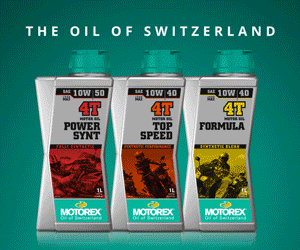Ducati 750 GT
With Ian Falloon
After a difficult decade during the 1960s, Ducati approached the 1970s with new management and a much more positive outlook. Although still under government control, the EFIM appointed Arnaldo Milvio and Fredmano Spairani to run the company, and they were serious about entering the world of Superbikes.

In 1970 everyone dreamed of a Superbike and Milvio and Spairani wanted Ducati to part of this new phenomenon. Unfortunately Ducati was still a minor Italian manufacturer known primarily for producing smaller capacity overhead camshaft singles and particularly unremarkable two-strokes.
Without the resources to create a three or four cylinder Superbike Ducati’s chief engineer Fabio Taglioni was asked to design a 750, taking a pragmatic approach.
Taglioni well remembered the racing success of the 120-degree 500cc Moto Guzzi twin of 1935-1953. This retained the horizontal front cylinder of a single, maintaining a lower centre of gravity, with the rear cylinder facing slightly rearward.
There were other advantages too, not the least being a good flow of air to cool the rear cylinder. These ideas influenced him when he took two existing 350 cc singles and placed them on a common crankcase with the cylinders 90-degrees apart.

As an engineering purist, Taglioni chose the 90-degree layout for several reasons. He preferred 90-degrees because it offered perfect primary engine balance and with this layout the engine could be very smooth, with only some high frequency secondary imbalance.
Also, theoretically the twin could be little wider than a single so the engine could be kept low in the frame while maintaining good ground clearance.

Taglioni called it an L-twin, and established the trademark engine layout that has been associated with Ducati ever since.
With a pair of British Amal 30 mm carbs and low compression 8.5:1 pistons, the 750 GT provided only moderate performance but it was the way the engine performed that was appealing. The power delivery was smooth and effortless, the engine relaxed and loping, even when running close to the 8000 rpm redline. And there was a lot more to the 750 Ducati than the engine.

The handling was class leading. Taglioni eschewed the almost universal double cradle Norton “Featherbed” style frame in favour of an open cradle design using the engine as a stressed member. While other Superbikes featured forks with skinny and flexible 35mm tubes the Ducati had a beefy 38mm leading axle fork specially built by Marzocchi. The front brake included a cast-iron disc with a racing style twin-piston Lockheed caliper.
Taglioni also knew the benefit of minimising unsprung weight, fitting the 750 GT with Borrani alloy rims, a 19-inch on the front and 18-inch on the rear. As the weight was only 185 kg the 750 GT was one of the lightest Superbikes available.
The engine layout dictated a very long 1530 mm wheelbase, and with an extreme steering rake of 29 degrees the Ducati 750 provided unparalleled stability. It wasn’t the most agile of Superbikes but when it came to high speed handling the 750 Ducati was in a class of its own. This played dividends early in 1972 when Taglioni took a batch off the production line to prepare racing machines for the Imola 200.

The production 750 GT first appeared in July 1971, and many unique features characterised the early examples. They had ‘70s-style metal flake fiberglass gas tanks, stainless steel “Inox” fenders, some had four-leading shoe rear brakes, and all had barking Conti exhaust pipes.
Ducati saw the US market for the 750 as particularly important and they built a specific US version with higher handlebars and a larger taillight.

The 750 GT was a slow seller until April 1972 when Paul Smart won the Imola 200. Ing. Fabio Taglioni said in 1974, “When we won at Imola we won the market too.”
Over the next two years the 750 GT gradually became more sanitised. Steel replaced fibreglass for the gas tank and side covers, painted steel mudguards replaced stainless steel, and the carburettors became Italian Dell’Orto instead of Amal. During 1973 Italian Scarab brakes replaced the British Lockheed and for 1974 the distinctive leading axle fork made way for a Ceriani or Marzocchi center axle type.

Noise regulations saw ugly seamed Lafranconi silencers replacing the decibel meter breaking Contis, and eventually steel wheel rims replaced the beautiful Borranis. Considering production numbers were quite low there were an astonishing number of 750 GT variants. A few also had electric start.
The 750 GT concept may have been diluted by 1974 but the fabulous bevel-drive overhead camshaft “round-case” twin continued, at least for a short while. Characterised by beautiful distinctive polished aluminium outer engine covers, ultimately the cost of producing this wonderful engine led to its demise.
As drive to the two overhead camshafts was by a set of bevel gears from the crankshaft, and as every shimmed gear was dependent on another this was an extremely labour intensive engine to manufacture. It was rumoured that it took eight hours to assemble each production engine from scratch, and two days for a racing motor.

By 1974 the 750’s proponents Milvio and Spairani had long departed and the new bean counter, Cristiano de Eccher, saw no future for the expensive 750 in EFIM’s plans for Ducati’s economic justification. He had car stylist Giorgetto Giugiaro of Italdesign create the 750’s replacement, the 860 GT, at the same time abandoning the classic overhead camshaft singles for the parallel twins.
The final nail in the coffin for the 750 round-case was US regulations from September 1974 requiring all motorcycles to shift on the left side. So with production spanning only three years, and production numbering a meagre 5,284, the 750 GT and the distinctive “round-case” engine was finished.
Now it is acknowledged as the father of the Ducati “L” twin, also representing the end of an era characterised by engineering purity and production without the interference of economic rationalisation.
Ducati 750 GT Specifications
| Ducati 750 GT Specifications | |
| Engine type | Air-cooled 90° Twin-cylinder |
| Bore x stroke | 80 x 74.4 mm |
| Compression Ratio | 8.5:1 |
| Displacement | 748 cc |
| Carburettors | Dual 30mm Amal or Dell’Orto carbs |
| Power | 57 hp @ 7700rpm |
| Gearbox | Five-speed |
| Front brake | 280 mm disc |
| Rear brake | 200 mm drum |
| Wheelbase | 1530 mm |
| Weight | 185 kg |
| Top speed | 190 km/h |























